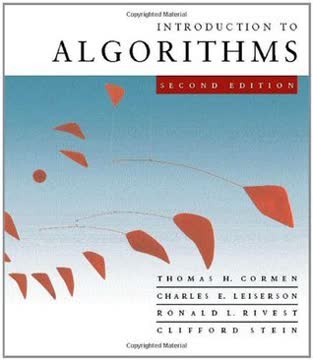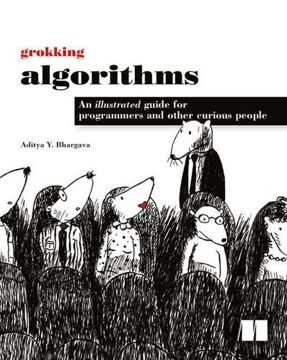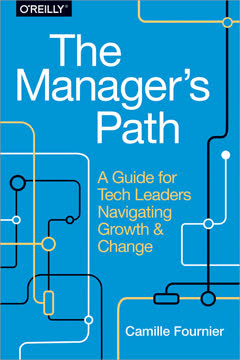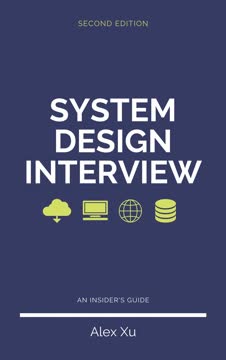Key Takeaways
1. Algorithms are procedures for well-defined problems, aiming for correctness, efficiency, and ease of implementation.
To be interesting, an algorithm must solve a general, well-specified problem.
Define the task. An algorithm is fundamentally a procedure designed to accomplish a specific task. For an algorithm to be useful and interesting, this task must be clearly defined, specifying both the set of possible inputs it must handle and the required output for each input instance. This distinction between a general problem and a specific instance is crucial.
Desirable qualities. A good algorithm strives for three key properties: correctness, efficiency, and ease of implementation.
- Correctness: It must produce the desired output for every valid input instance.
- Efficiency: It should solve the problem quickly and use minimal resources.
- Ease of Implementation: It should be straightforward to translate into working code.
These goals can sometimes conflict, requiring trade-offs based on the application's needs.
Beyond simple steps. While simple operations form the building blocks, algorithms involve sequences of these operations, often including loops and subroutines. The time taken by an algorithm is measured by counting these basic steps, typically using the RAM model of computation, which assumes uniform cost for simple operations and memory access.
2. Correctness is paramount and requires rigorous demonstration, as intuitive heuristics often fail.
Reasonable-looking algorithms can easily be incorrect.
Intuition is insufficient. It is rarely obvious whether a given algorithm correctly solves a problem for all possible inputs. Relying on intuition or testing a few examples is dangerous, as seemingly logical heuristics can fail dramatically on specific, often simple, counter-examples. The nearest-neighbor heuristic for the Traveling Salesman Problem and the earliest-job-first heuristic for movie scheduling are prime examples of intuitive approaches that produce suboptimal or incorrect results.
Algorithms vs. Heuristics. A critical distinction exists between algorithms and heuristics.
- Algorithms: Guaranteed to produce a correct result for every valid input instance.
- Heuristics: May often produce good results but offer no guarantee of correctness or optimality.
For critical applications, a heuristic is unacceptable unless its limitations are fully understood and accounted for.
Demonstrating correctness. A correct algorithm requires a clear demonstration or proof of why it must work for all inputs. This involves a precise problem statement, defined assumptions, and a logical chain of reasoning. Without such a demonstration, you cannot be certain your algorithm is reliable.
3. Mathematical tools like induction and counter-examples are essential for reasoning about algorithm correctness.
Searching for counterexamples is the best way to disprove the correctness of a heuristic.
Finding flaws. The most definitive way to prove an algorithm is incorrect is to find a counter-example – a specific input instance where the algorithm fails to produce the correct output. Good counter-examples are:
- Verifiable: You can calculate the algorithm's output and show a better/correct output.
- Simple: They are small and highlight the exact reason for failure.
Techniques for finding counter-examples include thinking small, thinking exhaustively through simple cases, hunting for the algorithm's weakness (e.g., greedy choices), going for ties in input values, and seeking extremes.
Proving correctness. For algorithms believed to be correct, especially recursive or incremental ones, mathematical induction is a powerful proof technique.
- Basis Case: Show the algorithm is correct for the smallest input size.
- Inductive Step: Assume correctness for size k-1 and prove correctness for size k, using the assumption.
Care must be taken with boundary conditions and ensuring that the inductive assumption truly applies to the subproblems.
Summations and analysis. Understanding mathematical summations is also vital, particularly for analyzing algorithm efficiency (discussed in later chapters). Formulas for arithmetic and geometric progressions are fundamental tools for expressing and simplifying the work done by loops.
4. Effective algorithm design begins with modeling real-world problems using abstract combinatorial structures.
Modeling your application in terms of well-defined structures and algorithms is the most important single step towards a solution.
Bridging reality and theory. Real-world problems involve complex objects and relationships. Algorithms, however, operate on abstract, rigorously defined structures. Modeling is the art of translating your messy real-world application into a clean problem expressed in terms of these fundamental combinatorial objects.
Common abstract structures:
- Permutations: Orderings or arrangements (e.g., robot tours, sorting).
- Subsets: Selections or collections (e.g., movie scheduling, knapsack).
- Trees: Hierarchical relationships (e.g., family trees, file systems).
- Graphs: Arbitrary relationships or networks (e.g., road maps, social networks).
- Points: Locations in space (e.g., facility locations).
- Polygons: Regions in space (e.g., country borders, obstacles).
- Strings: Sequences of characters (e.g., text, DNA).
Recursive nature. Many of these structures are recursive – a large instance can be broken down into smaller instances of the same type. Recognizing this recursive structure is key to designing recursive algorithms and dynamic programming solutions. Proper modeling allows you to leverage existing, well-understood algorithms and data structures from the vast literature.
5. The book focuses on practical techniques for algorithm design, including data structures, dynamic programming, and graph algorithms.
This book is intended as a manual on algorithm design, providing access to combinatorial algorithm technology for both students and computer professionals.
Core techniques. The first part of the book delves into fundamental algorithm design techniques essential for tackling real-world problems. These techniques provide the algorithmic toolkit for transforming modeled problems into efficient solutions.
Key areas covered:
- Data Structures: Efficient ways to organize and store data for quick access and modification (e.g., arrays, lists, trees, hash tables).
- Dynamic Programming: A technique for solving complex problems by breaking them into overlapping subproblems and storing results to avoid recomputation.
- Graph Traversal: Systematic ways to visit every vertex and edge in a graph (e.g., Breadth-First Search, Depth-First Search), forming the basis for many graph algorithms.
- Backtracking: A systematic search technique for exploring all possible solutions to combinatorial problems.
- Heuristics: Practical methods that aim for good solutions quickly, even if optimality isn't guaranteed.
Practical emphasis. The book prioritizes practical application and design over purely theoretical analysis. While correctness is stressed, formal mathematical proofs are often replaced by informal arguments, focusing on getting the reader "going in the right direction as quickly as possible."
6. The book provides resources like a problem catalog, implementations, and war stories to aid algorithm designers.
Good algorithm designers stand on the shoulders of giants.
Leveraging existing knowledge. Effective algorithm design doesn't always require inventing new algorithms from scratch. Knowing what problems have been studied before and what solutions exist is a crucial skill. The book provides resources to help designers stand on the shoulders of giants.
Key resources:
- Catalog of Algorithmic Problems: A collection of 75 important problems arising in practice, with descriptions, input/output examples, and known solutions.
- Implementations: Pointers to existing, solid code for many algorithms, available online.
- Extensive Bibliography: References to primary sources and additional reading.
- Electronic Component: A central website (algorist.com) for code retrieval and supplementary materials.
Beyond theory. These resources emphasize that practical algorithm design involves not just understanding techniques but also knowing where to find existing solutions and implementations. The goal is to properly model your application and then access the relevant algorithmic technology.
7. Real-world problems often require careful modeling and validation, as illustrated by war stories.
The moral of these stories is that algorithm design and analysis is not just theory, but an important tool to be pulled out and used as needed.
Contextualizing algorithms. The book includes "war stories" – tales from the author's experience with real-world problems. These stories demonstrate how algorithmic problems arise in practice, often as subproblems within larger projects when existing solutions prove inadequate.
Modeling challenges. War stories highlight the critical role of modeling. The "Psychic Modeling" story, for instance, shows how an initial, seemingly reasonable model of a lottery problem was incorrect, leading to a flawed solution. It underscores the need to:
- Carefully formulate the problem in terms of abstract structures.
- Validate the model against small examples or with the client.
- Be prepared to revise the model if it doesn't accurately capture the problem's essence.
Algorithms as tools. These narratives reinforce that algorithm design and analysis are practical tools to be applied when needed. They showcase the mindset of an "algorist" in action, demonstrating how understanding fundamental concepts and available resources can lead to effective solutions for complex, real-world challenges.
Last updated:
Review Summary
The Algorithm Design Manual receives high praise for its practical approach, clear explanations, and real-world examples. Readers appreciate the "war stories" and problem-solving techniques. Many find it more accessible than other algorithm books, though some prefer more rigorous texts. The book is valued for interview preparation and as a reference guide. Critics note occasional typos and duplicated problems. Overall, it's considered an essential read for programmers and computer scientists, bridging the gap between theory and practice.
Similar Books






Download PDF
Download EPUB
.epub digital book format is ideal for reading ebooks on phones, tablets, and e-readers.




